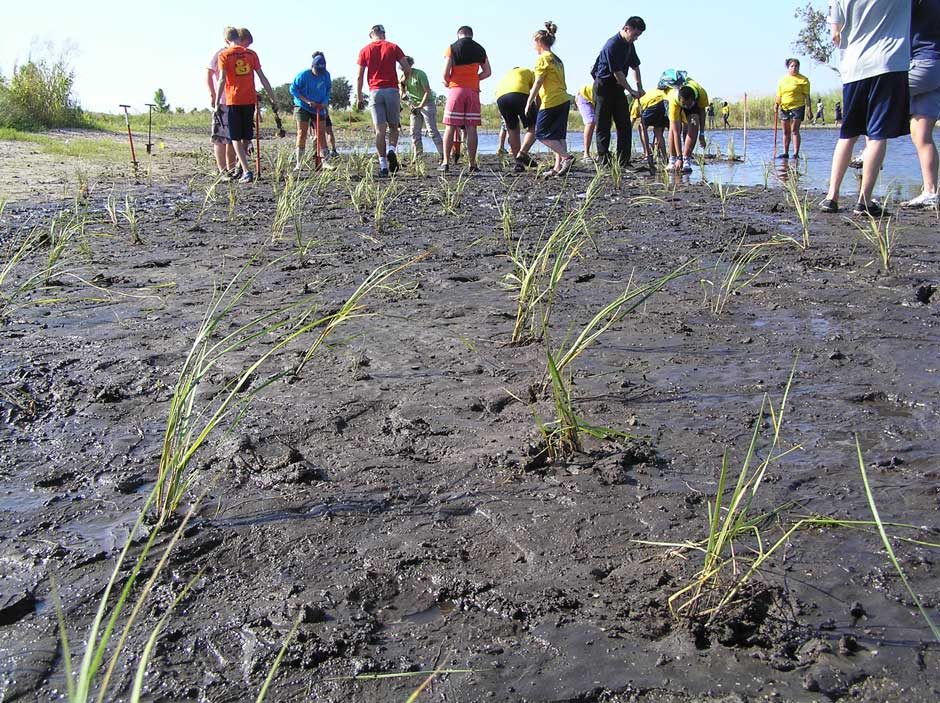Ecosystem Restoration
- Ayrıntılar
- Üst Kategori: ROOT
- Kategori: Ecology Writings
Ecosystem Restoration
Ecosystem Restoration is the “process of assisting the recovery of an ecosystem that has been degraded, damaged or destroyed” (SER Primer, 2004).
Many of the world's ecosystems have undergone significant degradation with negative impacts on biological diversity and peoples' livelihoods. There is a growing realization that we will not be able to conserve the earth's biological diversity through the protection of critical areas alone. When applicable, Ecosystem Restoration should be an important component of conservation and sustainable development programmes so that the livelihoods of people depending on these degraded ecosystems can be sustained.
Ecosystem Restoration is thus a significant contribution to the application of the Ecosystem Approach, e.g. in informing the negotiation of land use options and enhancement of healthy ecological networks. The Commission on Ecosystem Management (CEM) has identified Ecosystem Restoration as one of its 19 priority thematic areas.

For more detailed information on the science and practice of Ecosystem Restoration, the following resources of the Society for Ecological Restoration International (SER) are provided.
Foundation Documents
SER Primer on Ecological Restoration is a concise statement of restoration principles and includes the most cited definition of what restoration is, how it is planned, conducted, and evaluated, and it integration with related disciplines (available in English, French, Spanish, Italian, Portuguese, and Chinese).
SER Guidelines for Developing and Managing Ecological Restoration Projects describes the procedures for conducting ecological restoration in accord with the norms of the discipline that were established in the SER Primer. Each procedure is stated in terms of a guideline that leads restoration practitioners and project managers stepwise
through the process of ecological restoration.
Ecological Restoration – a means of conserving biodiversity and sustaining livelihoods is a call to action by the ecological restoration joint working group of SER and the IUCN Commission on Ecosystem Management. It outlines how ecological restoration can provide enhanced biodiversity outcomes as well as improve human well-being in degraded landscapes (available in English and Spanish).
Ecological Restoration in Protected Areas
SER and Parks Canada have taken the lead on the IUCN WCPA Task Force on Ecological Restoration in preparing a Best Practice Guideline for Ecological Restoration in Protected Areas to be presented at the World Conservation Congress in 2012. The collaborative document on protected areas in Canada serves as the basis for this work (available in English,
Briefing Notes & Policy Position Papers
Opportunities for Integrating Ecological Restoration & Biological Conservation within the Ecosystem Approach addresses the complementary roles of ecological restoration and biological conservation, and their potential for integration within a unified ecosystem approach.
Ecological Restoration as a Tool for Reversing Ecosystem Fragmentation looks at those regions or countries with large tracts of intact ecosystems or wilderness where fragmentation poses a serious problem or better yet a great opportunity for preserving or restoring connectivity and resilience.
Ecological Restoration and Rare Species Management in Response to Climate Changeargues that conservation and restoration projects should not be considered as last resort activities but rather as vitally important investments in the future sustainability of the planet.
Book Series
The Science and Practice of Ecological Restoration, an SER/Island Press book series, now contains 18 important titles devoted to advancing restoration science and practice as well as promoting their integration with the conservation sciences.
Journals
Restoration Ecology is a peer-reviewed journal published by SER since 1993 which highlights cutting-edge research on restoration principles and techniques.
Ecological Restoration, an SER associated journal, is an indispensable guide for practitioners in the field and a forum for people interested in all areas of ecological restoration.
Networks
Restoration Networks – like the Indigenous Peoples’ Restoration Network (IPRN), Global Restoration Network (GRN), and Community Restoration Network (CRN) – are fast becoming the heart of this emerging field now recognized as an essential tool in addressing our global environmental crisis.
The Global Restoration Network (GRN) offers the field of ecological restoration a new database and web-based portal to trustworthy and hard-to-find information on all aspects of restoration, from historic ecosystems and causes of degradation to in-depth case studies and proven restoration methods and techniques. The overriding mission of the GRN is to link research, projects, and practitioners in order to foster an innovative exchange of experience, vision, and expertise.
The time has come to bridge the gap between the discipline of restoration ecology and communities around the world attempting to restore the ecological integrity of their surrounding landscapes. The Society for Ecological Restoration International (SER) has designed the Community Restoration Network (CRN) to do just that. By providing practical knowledge, scientific understanding, and proven expertise, SER seeks to help meet the increasing needs of volunteer-driven, community-based ecological restoration projects around the world.
The primary goals of the Indigenous Peoples’ Restoration Network (IPRN) are to develop and use the tools of ecological restoration to enhance the survival of indigenous peoples and their cultures, and to incorporate the TEK of indigenous tribes and native communities into newly emerging models of sustainable agro-ecosystem management.
This unique photo gallery of before-and-after photos of projects is an effective way to illustrate the important role of ecological restoration.
There are a number of options when joining the Society for Ecological Restoration International which include benefits such as a weekly e-bulletin RESTORE that compiles restoration news from around the world, conference and journal discounts, and much more.
Thematic Group Leads
Keith Bowers (Bu e-Posta adresi istenmeyen posta engelleyicileri tarafından korunuyor. Görüntülemek için JavaScript etkinleştirilmelidir.)
Biohabitats, Inc.
2081 Clipper Park Road
Baltimore, MD 21211
USA
TEL: +1 410 554 0156
Brock Blevins (Bu e-Posta adresi istenmeyen posta engelleyicileri tarafından korunuyor. Görüntülemek için JavaScript etkinleştirilmelidir.)









